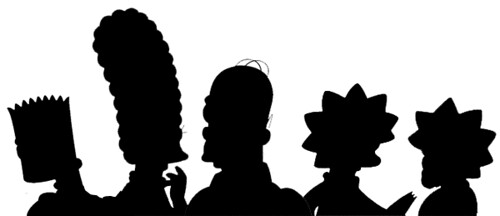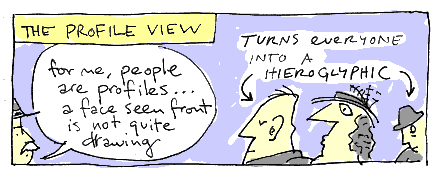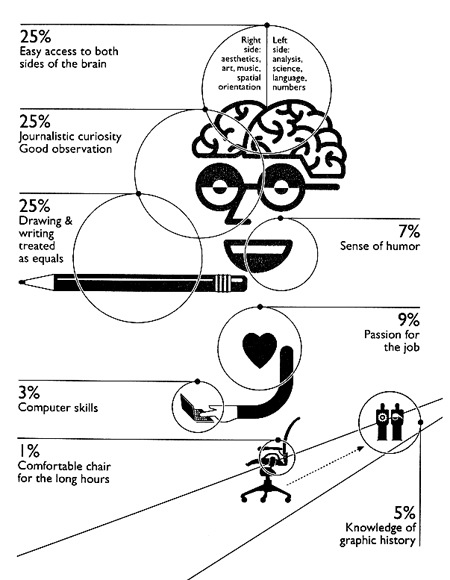
So I was listening to the “Hair” episode of Bob Dylan’s Theme Time Radio Hour, and halfway through it went something like this:
Dylan: I ran into Matt Groening at the comic book store. He took time out from buying the new Superman to talk to me…
Matt Groening: The secret of designing cartoon characters — and I’m giving away this secret now to all of you out there — is: you make a character that you can tell who it is in silhouette. I learned this from watching Mickey Mouse as a kid. You can tell Mickey Mouse from a mile away…those two big ears. Same thing with Popeye, same thing with Batman. And so, if you look at the Simpsons, they’re all identifiable in silhouette. Bart with the picket fence hair, Marge with the beehive, and Homer with the two little hairs, and all the rest. So…I think about hair quite a lot.
Groening has said this in quite a few interviews. I made the graphic above to test it out. It reminds me of what Saul Steinberg said about profiles:

